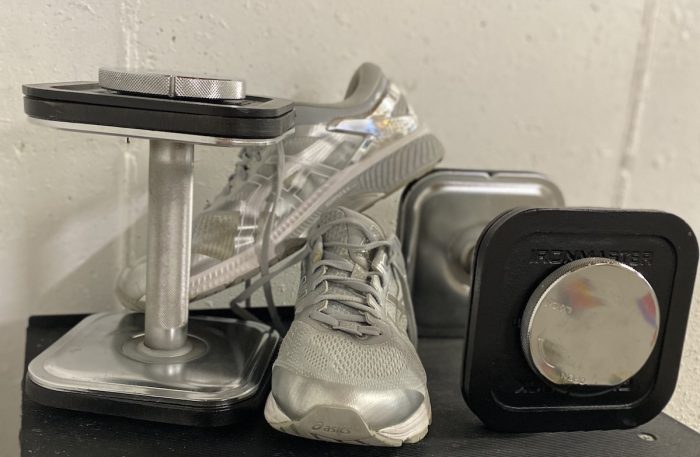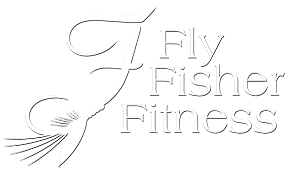The Right Amount of Exercise
 The right amount of exercise always comes up.
The right amount of exercise always comes up.
A recent study suggests that running 50 minutes per week can lower your risk of premature death from all causes. That’s good to read, but not everyone wants to run. Some people can’t run. What are the equivalents?
How about looking at this from another angle? A 2023 British Journal of Sports Medicine study found: sitting 12 or more hours a day is too much and has a 38% higher risk of death than those who sat 8 hours a day. The rate of increased risk dropped in accordance with levels of moderate-to-vigorous exercise. Just 10 minutes of exercise per day reduced the risk of death by 35%, and 22 minutes or more eliminated the risk.
It’s not running that is the key here. It’s exercise—moving with enough vigor to create mild physical adversity or micro-trauma at the cellular level. As the largest endocrine organ in your body, your muscles respond to exercise by secreting healthful, growth and energy building chemicals, hormones, and messenger proteins directly into the bloodstream. Under the ‘good stress’ of exercise, your bodily infrastructure becomes flooded with the life-giving juices of growth, repair, rebuild, and immune protection.
That’s your biology—what you have been endowed with, providing the reduced risk of premature death. It also functions to reduce premature aging. Some researchers describe it as exercising to stimulate the ‘longevity pathway.’ That’s how significant you exercising is!!!
Lowering Risk of Death = Lifespan
What researchers are talking about when they say, “lower risk of premature death” is lifespan—how long, the number of years you will live. It’s noteworthy and we should do everything in our control to avoid leaving good years on the table. Or worse, dying from something that could be prevented. The right amount of exercise is relevant here!
You don’t have to run to ensure you get the lifespan benefit. Do equivalent aerobic exercises: walking, running, swimming, rucking, biking, rowing or stair-stepping at least 10 minutes per day (optimal is 20 minutes) for the 35% reduced risk. More effort equals a greater reduction in risk. For the greatest overall health benefit, hit and maintain a target heart rate (THR) of 60-70% of your max (MHR) which is 220 minus (-) your age. For a 50-year-old, MHR is 170. So, the THR of 60% would be: 102 beats per minute during aerobic exercise. To ensure a solid workout, use the ‘talk test’ or wear a heart rate monitor.
Know this, doing enough exercise to ensure you won’t die prematurely is entry level. This effort will keep you alive. No one says anything more than “you will not die.” This is what medical professionals do. They keep you alive. Doctors relieve symptoms and delay death. How well you live in that timeframe is not your doctor’s concern. The medical industry claims it provides ‘healthcare’ but that’s a misnomer. The way our system works now is more like ‘illness-care.’ At diagnosis, the disease has taken hold, it’s embedded itself. This is the point where you get the required attention of medical professionals. Doctors will treat the disease and the patient’s life is prolonged with medical care, but at what quality? That is at the crux of the gap—good lifespan and poor healthspan and why aging scares the hell out of most of us.
Healthspan is Directly Coorelated With The Right Amount of Exercise
How well you are living, the quality of those extended years is your healthspan.
Real healthcare would prioritize prevention and careful monitoring, especially as we age. Researchers have recognized this ‘healthspan fissure.’ In The Gerontologist, Eileen Crimmins wrote, “we have reduced mortality more than we prevented morbidity. Healthspan will be increased when morbidity is decreased.” The medical industry operates on a reactive rather than a proactive model.
Proactive Prevention is Your Responsibility
If there is going to be prevention (of disease, decline or decay) in your healthcare, you will create it. Healthspan—how well you age, the quality of your later decades is not found in a doctor’s office. That’s our medical system. We deserve better but, if you want better, you’ll have to create it yourself. Get more involved and engaged in your healthcare and make it happen on your terms.
The exercise noted above is the aerobic side. It develops your type-1, slow-twitch (type-1 muscle) muscles and gives you aerobic capacity and endurance—how long you can perform moderate exercise. You need to do more than aerobic exercises.
Doing More Than Just The Right Amount of Exercise
Beginning around age 30, the human body loses 3-8% of muscle each decade and that percentage progresses with each decade. Activity slows this natural biological process and spurs your biology in the opposite, growth direction. Inactivity speeds up the process and feeds muscle loss momentum. The cascading effect of muscle loss opens the door to disease. One study found three millennia of causal data pointing to inactivity as the primary cause of chronic disease. “Chronic diseases are major killers in the modern era. Physical inactivity is a primary cause of most chronic diseases.” Note: one millennium is one thousand years!
The muscle we lose the fastest is our type-2, fast-twitch muscle (type-2 muscle). This is the muscle used for power moves, picking up grandchildren, carrying, hiking. And it has a silent, less-obvious (profound) connection to coordination. This is why older people fall. Not because they trip more, but because they lose the lightning-fast ability to catch themselves without thinking about it. I call it a ‘profound connection’ because falls are serious and numerous in seniors. In 2019, 83% percent of hip fracture deaths and 88% of emergency department visits and hospitalizations for hip fractures were caused by falls. Loss of coordination is parallel to the loss of muscle
Another study in Physiological Review stated, “Importantly, physical inactivity, itself, often plays an independent role as a direct cause of speeding the losses of cardiovascular and strength fitness, shortening of healthspan, and lowering of the age for the onset of the first chronic disease, which in turn decreases quality of life, increases health care costs, and accelerates mortality risk.”
You can’t argue with the data. But many people still believe their opinion more strongly than facts. They have said to me, “I’m not so sure about the benefits of exercise that you profess. I don’t think you can influence aging or induce growth and repair.” Even though these people have no experience with exercise or clinical research, they have decided it is chimera. They are part of the approximately 80% of the US population who are insufficiently active.
What I ‘profess’ comes from personal experience, using my body as a disease-fighting, age defying tool, combined with peer-reviewed clinical research. So, the evidence is two-pronged, experiential and clinical.
If you really want to live longer (lifespan) and better (healthspan), you should also do resistance training. That is using weight as resistance to work and develop your type-2 muscles. Resistance training is critical because after age 30, we are progressively losing muscle. The older we get, the more and faster we lose it. Also, in all the studies mentioned, researchers have noted that inactivity speeds up the process of aging. That equates to cascading events of decline…………
Recommendations for The Right Amount of Exercise
Develop yourself into an ‘athlete of aging.’ For aerobic exercises, keep that THR for 60 minutes, 4 times per week. It’s a challenge to work toward. Nothing will enhance your overall health and bodily healing like this effort. You can take back those many years of complacency, poor diet and going directly from office to car to couch. Under the right conditions, and that is the key, your body will build muscle, endurance and new infrastructure while healing most of the damage from putting everything else in life ahead of caring for your body. With consistent effort, you could become functionally younger.
The only way to maintain and develop type-2 muscle is with resistance training. This training is more complex than aerobics. Your muscles need a recovery time of 48 hours between resistance training sessions. Also, it’s critical to get the form correct and use the perfect amount of weight (resistance). For example, people ask me about injured elbows, knees and shoulders. As we talk, I learn that these injuries are from straining with too much weight and/or incorrect form. Under-developed tendons and ligaments—the things that hold your joints together can’t hold up. Tendons and ligaments develop slower than muscle and powerful muscle will tear these tissues, as evidenced.
Resistance exercises are: push-ups, pull-ups, squats, deadlifts, leg presses, use body weight, machines or free weights (barbells and dumbbells). Go slow and light. Consistency beats intensity. The goal is to stay in the game with vigor. Avoid being sidelined or inactive at all costs.
Talk to a personal trainer. Get their specialized, specific direction and experience. From there, develop your own program. Trainers don’t cost that much. The investment will save the priceless integrity of your physique and fitness level.
Doing the minimum will give you minimal results. You reap what you sow. The BIG takeaway is you’re in control. You have the agency to influence the trajectory of your future….in either direction!
A better future requires action now.
Are you interested in joining a community of like-minded fly fishers and outdoor types who want to engage and discuss The Art of Aging?
Learn more…..Join us on Substack!
Note: The information herein is meant to be general guidance on fitness. It is not a substitute for consultations with healthcare professionals. In fact, professional consultations are required for success with exercise. Always have a physician approve your planned activity before making changes.
Tags: Amount of exercise, Biology, Chronic Pain, endowed, good stress, Healthspan, Lifespan, Maximum heart rate, micro-trauma, outdoors, premature death, reduced risk, Rucking, Running, target heart rate, WalkingCategorized in: General Knowledge
